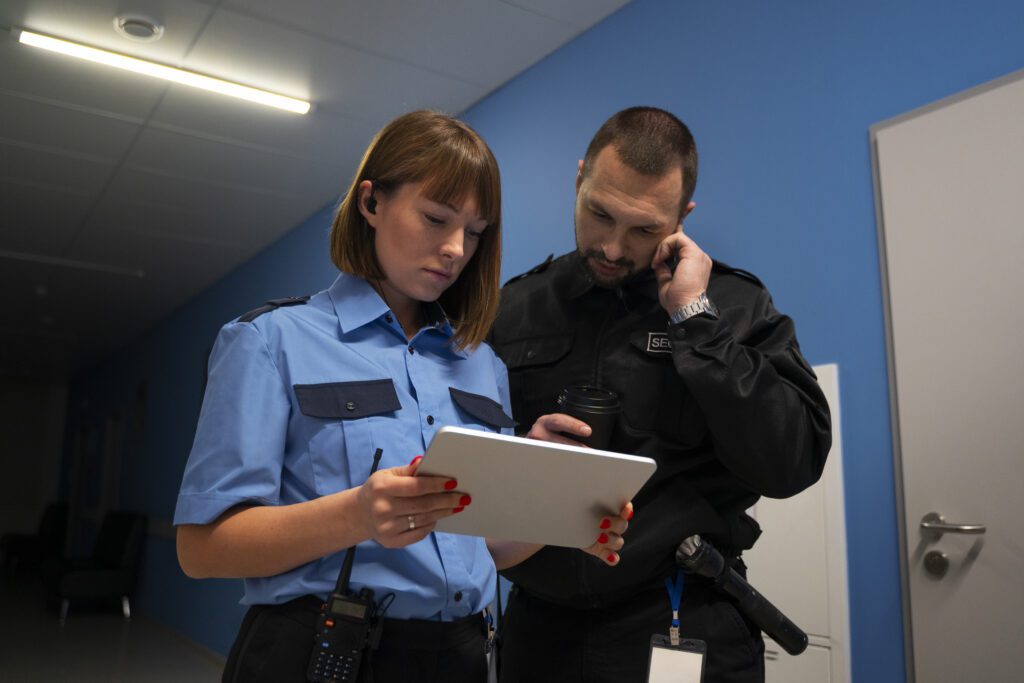Fortifying Cybersecurity at Your Police Department: Top 8 Recommendations for Enhanced Protection

In an era where digital threats are escalating, ensuring robust cybersecurity at police departments is more crucial than ever. These agencies handle sensitive data that, if compromised, can have severe consequences. In this blog, we delve into four key recommendations to bolster the cybersecurity posture of your police department.
1. Implement Comprehensive Training and Awareness Programs
One of the primary vulnerabilities in any organization, including police departments, is the human factor. Cybersecurity training should be an ongoing process, educating personnel on the latest cyber threats, such as phishing, social engineering, and ransomware attacks. Regular drills and awareness sessions can significantly reduce the risk of breaches caused by human error.
2. Secure Access with Robust Authentication Protocols
Police departments must safeguard their digital assets with strong authentication measures. This includes implementing complex passwords, multi-factor authentication (MFA), and biometric verification systems. Limiting access to sensitive information to only those who require it for their role is also essential. Such practices prevent unauthorized access and ensure that critical data is only accessible to verified personnel.
3. Regularly Update and Patch Systems
Cyber attackers often exploit vulnerabilities in outdated software and systems. Regularly updating and patching operating systems, applications, and security software is vital. Police departments should establish a routine for these updates and ensure that all systems are current with the latest security patches.
4. Establish a Comprehensive Incident Response Plan
Despite the best preventive measures, the possibility of a breach can never be entirely ruled out. Therefore, having a robust incident response plan is critical. This plan should outline clear protocols for containment, assessment, and recovery in the event of a cyber attack. It should also include communication strategies to inform relevant stakeholders and mitigate the impact of the breach.
5. Utilize Advanced Threat Detection Systems
Investing in advanced threat detection systems can significantly improve your department’s ability to identify and respond to cyber threats proactively. These systems use artificial intelligence and machine learning algorithms to detect unusual patterns and potential threats in real-time, allowing for quicker response and mitigation of risks.
6. Regularly Conduct Security Audits and Risk Assessments
Conducting regular security audits and risk assessments is crucial to identify vulnerabilities in your department’s cybersecurity infrastructure. These assessments should be thorough, covering all digital assets, and should be followed by prompt action to address any identified weaknesses. This proactive approach ensures that your security measures are always aligned with the latest threat landscape.
7. Foster a Culture of Security
Creating a culture of security within the department is vital. This involves making cybersecurity a part of the daily conversation, encouraging staff to share concerns and observations, and recognizing individuals who contribute to the department’s cybersecurity. A culture that values and understands the importance of cybersecurity measures will inherently strengthen your department’s defenses.
8. Secure Mobile Devices and Remote Access
With the increasing use of mobile devices and remote access in law enforcement, securing these platforms is essential. Implement strong encryption for data transmitted over networks, enforce the use of secure VPNs for remote access, and ensure that all mobile devices are equipped with the necessary security tools and protocols.
By incorporating these additional measures – advanced threat detection, regular audits, fostering a security culture, and securing mobile and remote access – your police department can significantly bolster its cybersecurity defenses. Remember, cybersecurity is a dynamic field, and staying informed and adaptive to new threats and technologies is key to maintaining robust security.
Conclusion
Protecting the cybersecurity infrastructure of a police department is not a one-time effort but an ongoing commitment. By focusing on comprehensive training, robust authentication, regular system updates, and a solid incident response plan, police departments can significantly enhance their defense against the ever-evolving landscape of cyber threats.


